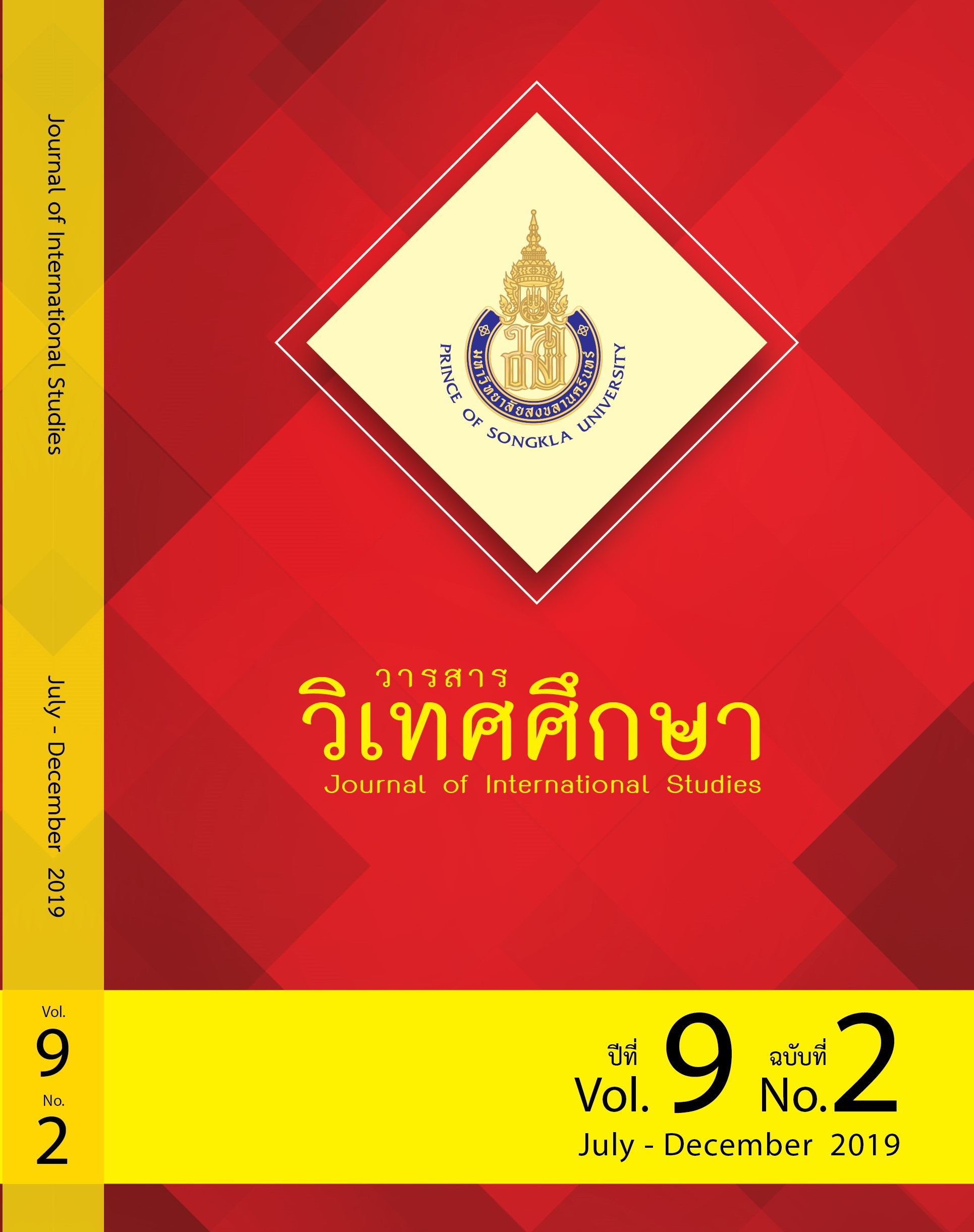Teaching models of polysemic word 잡다 /ʧaptʼa/ from the 21st Sejong Language Corpus Project
Main Article Content
Abstract
The objectives of this study are 1) to find out the usage frequency of polysemic Korean word 잡다/ʧaptʼa/ by analyzing the data from the 21st Sejong Language Corpus Project, and 2) to prioritize the most appropriate teaching plan of this word for Korean language learners as a second language. The corpus of 3,387 sentences, which includes the word 잡다/ʧaptʼa/ was collected from the 21st Sejong Language Corpus Project of National Institute of the Korean Language (NIKL). The data was analyzed in both semantic and statistic aspects by exploring the frequency in using the word 잡다/ʧaptʼa/. The result is analyzed by compared with the data from the corpus in Korean textbook (Burapasiriwat, 2018) and dictionary of the usage frequency of basic Korean (서상규, 2014). The result of this study revealed that 15 meanings were found necessarily to the Korean learners as second language. 3 meanings are mostly used for basic learners while 5 meanings are suitable for intermediate learners, and 7 meanings are for advanced learners.
Article Details
Statements and opinions expressed in articles herein are those of the authors and do not necessarily reflect the position of the editors or publisher.
Article, information, text, image, etc. which are published in Journal of International Studies, belong to Journal of International Studies. If anybody or any organization would like to use part or whole of them, they must receive written permission from Journal of International Studies before usage.
References
คยอง อึน ปาร์ค. (2554). ปรากฏการณ์พหุนัยของคำว่า 가다 /gada/ ในภาษาเกาหลี เปรียบเทียบกับคำว่า ไป ในภาษาไทย : การศึกษาตามแนวภาษาศาสตร์ปริชาน(วิทยานิพนธ์ปริญญาดุษฎีบัณฑิต). มหาวิทยาลัยธรรมศาสตร์.
เนติมา บูรพาศิริวัฒน์. (2561).พหุนัยคำว่า 잡다/ʧaptʼa/ ในภาษาเกาหลี ที่ปรากฏในตำราเรียน. วารสารวิเทศศึกษา มหาวิทยาลัยสงขลา นครินทร์, 8 (1), 227-248.
มหาวิทยาลัยสงขลานครินทร์. (2560). ม.อ.ปัตตานี ชูประเด็นนำเกาหลีศึกษาเข้าสู่ระบบอาชีวศึกษารองรับยุทธศาสตร์ไทยแลนด์ 4.0. ค้นเมื่อ 16 มิถุนายน 2560 จาก http://www.psu.ac.th/th/node/8075
ราชบัณฑิตยสถาน. (2546). พจนานุกรมฉบับราชบัณฑิตยสถาน พศ. 2542. กรุงเทพฯ: นานมีบุ๊คส์พับลิเคชั่นส์.
김은영. (2014). 태국인 한국어 학습자의 어휘 오류 연구. 경희대학교 교육대학원 석사학위논문.
김진희(2007), 동사 ‘잡다’의 다의 구조 연구. 경북대학교 교육대학원 석사학위논문.
강현화 외. (2013). 한국어 교육 어휘 내용 개발 2단계. 국립국어원.
낙콩 사시완. (2013). 한국어교육을 위한 한국어와 태국어의 다의어 대조 연구: 동사 ‘먹다’를 중심으로. 석사학위논문, 경희대학교, 서울.
문금현. (2006). 한국어 어휘 교육을 위한 다의어 학습 방안 :동사 '보다' 를 중심으로, 이중언어학, 30, 143-177.
서상규 외. (2006). 외국인을 위한 한국어 학습 사전. 서울: 신원프라임.
서상규. (2014). 한국어 기본어휘 의미 빈도 사전. 서울: 한국문화사.
연세대학교언어정보개발연구원. (2008). 연세한국어사전.두산동.
이유경. (2011). 한국어 어휘 의미 교육 등급 선정을 위한 기초 연구-동사를 중심으로, 이중언어학, 4


